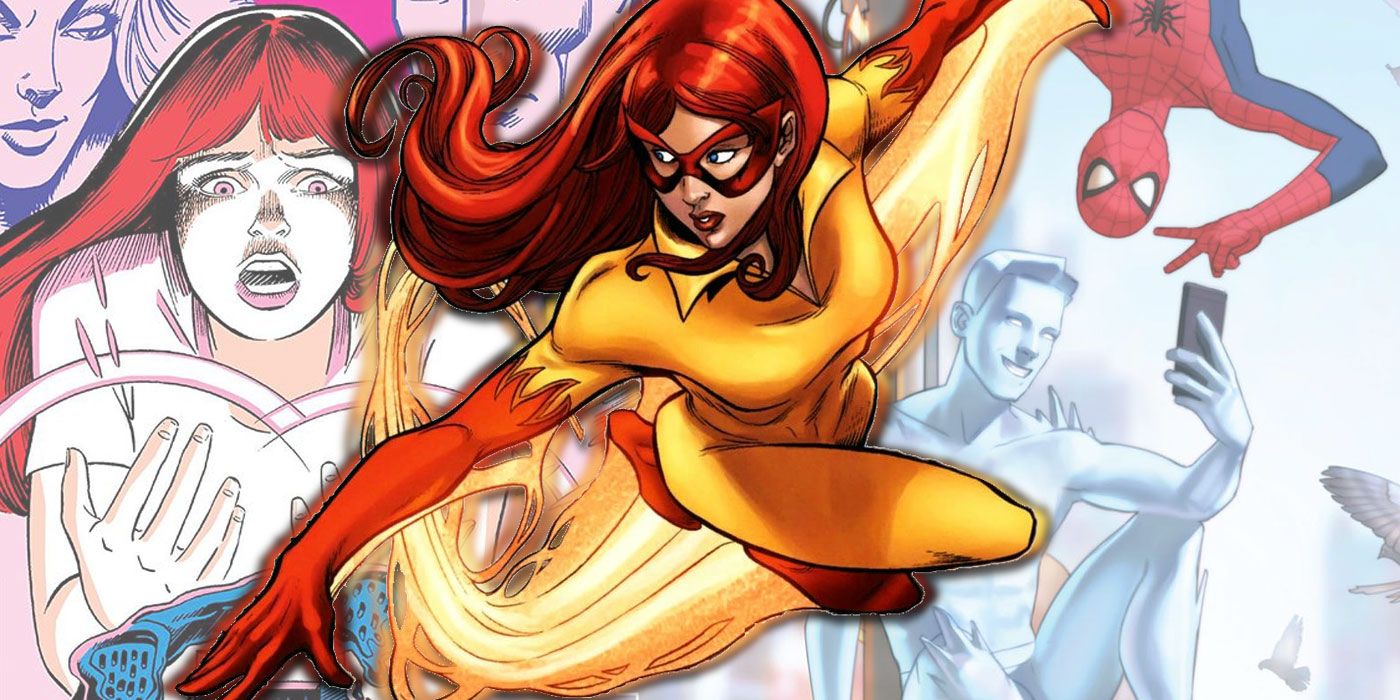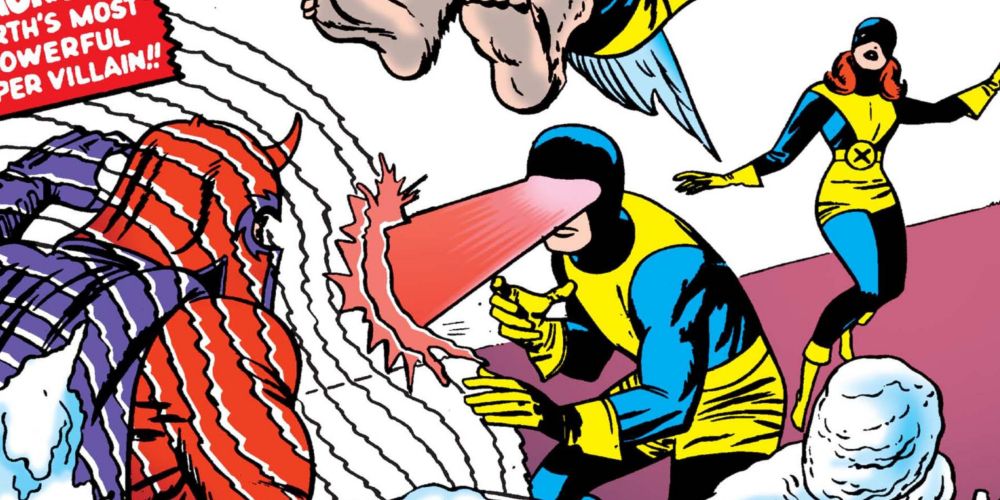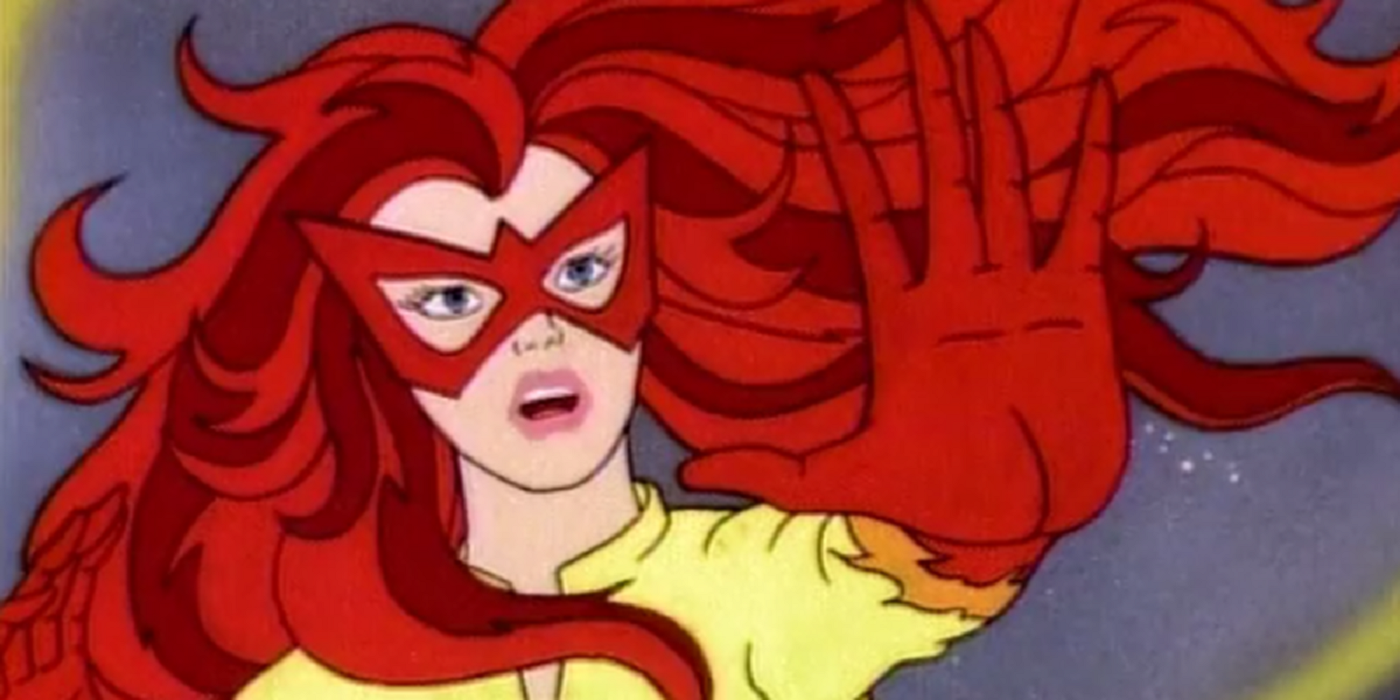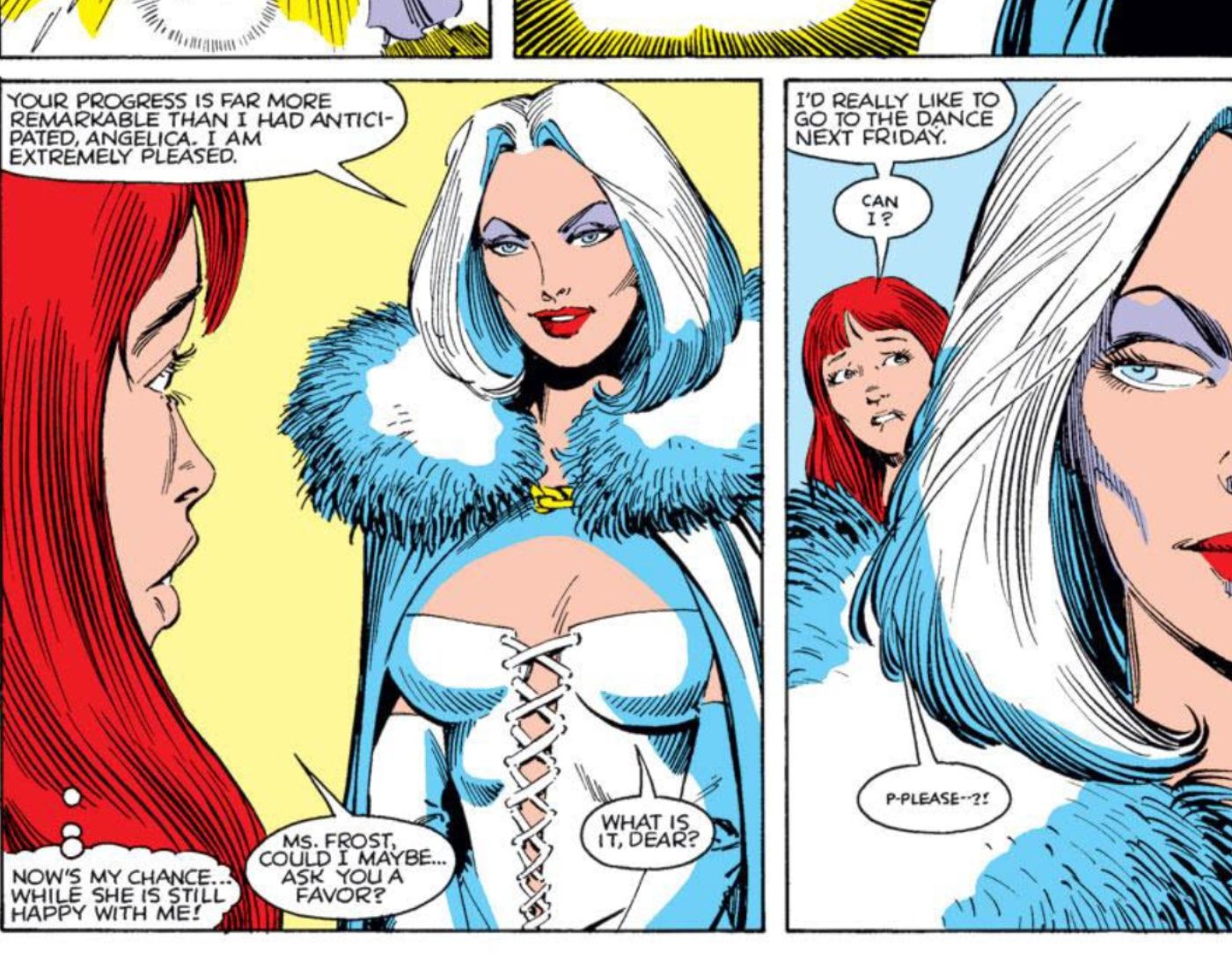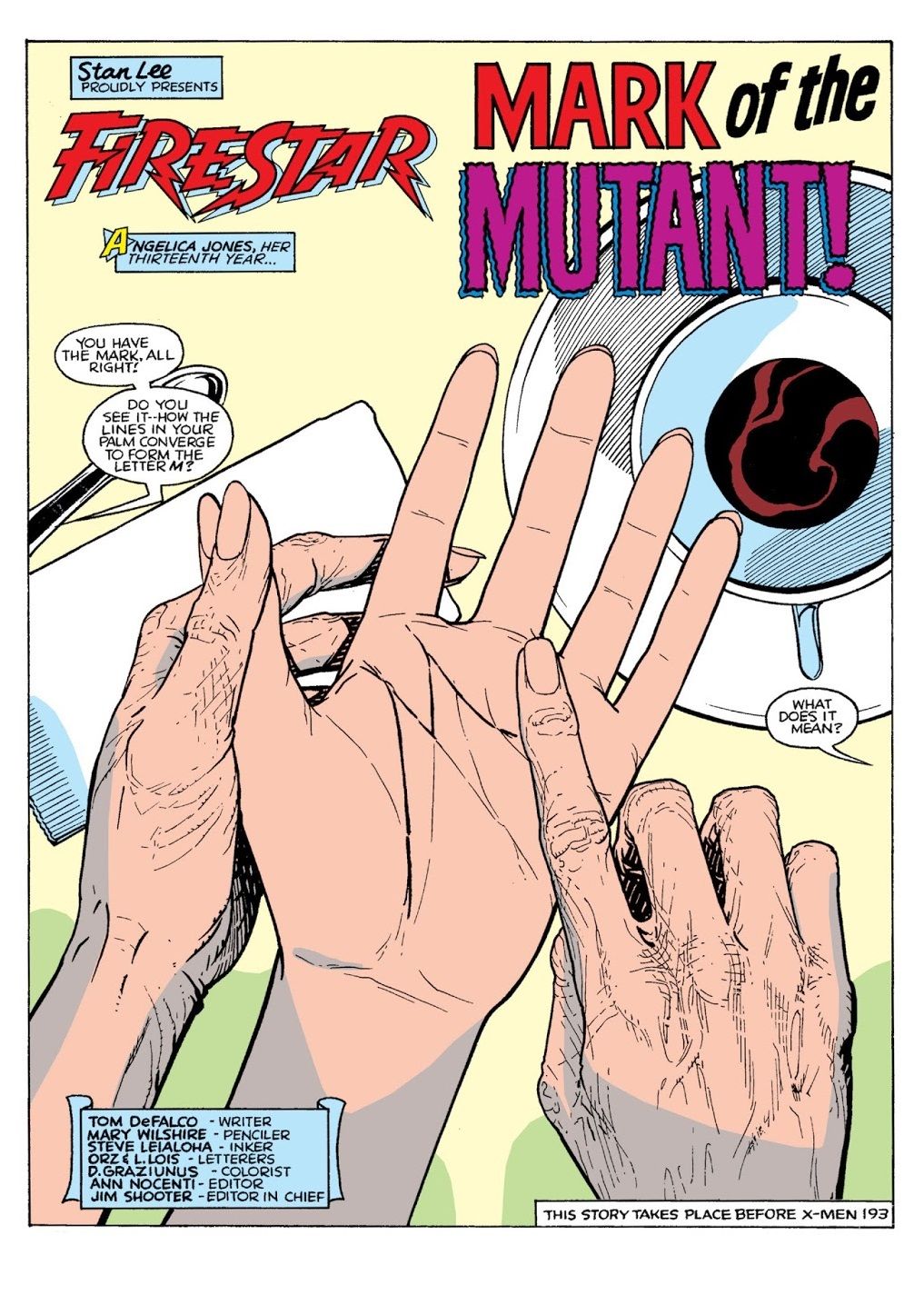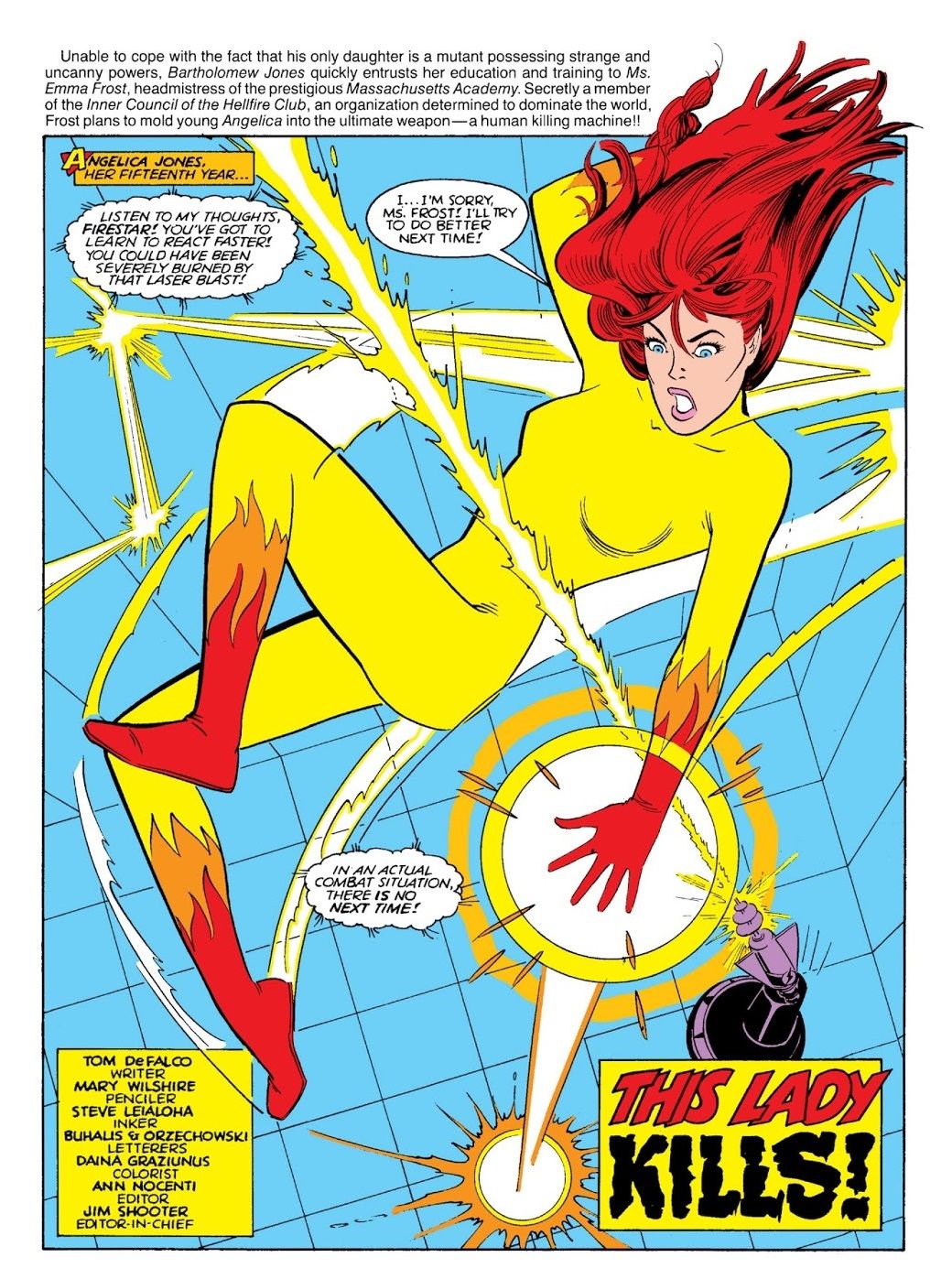With the official start of the Marvel Universe acknowledged as 1961's Fantastic Four #1, the conflict between an ongoing continuity and the reality of actual years passing has occasionally presented some problems for fans who do indeed sweat the details. Assuming Johnny Storm was eighteen in 1961, he would be eighty years old today, far more concerned with osteoporosis than Flaming On and fighting evil.
When crafting the earliest Marvel stories, Stan Lee worked under the assumption that rejuvenated superheroes were the latest fad, soon to be supplanted with a new craze. Since the characters weren't intended to live forever, or even live more than a few years, Stan would do something revolutionary for the era -- Marvel titles, in keeping with their more "realistic" approach to storytelling, would acknowledge the passing of time. If Daredevil's last encounter with Stilt-Man occurred in the previous calendar year, Daredevil would state that they fought "last year."
While the passing of years wouldn't affect the portrayal of a middle-aged scientist very much, the concept is truly significant in the life of a teenager. The X-Men, introduced as teen students in a mutant high school, graduated early in the title's run -- 1964's X-Men #7, which even depicted Professor Xavier handing out diplomas to the team, indicating they've completed both academic and superheroic studies.
Early issues of Amazing Spider-Man chronicled Peter Parker's evolution as a teen, culminating in his high school graduation in 1965's Amazing Spider-Man #28. Although never quite confirmed, rumors persisted for years that co-creator Steve Ditko resented Parker's aging from teenager to young adult, further deepening his rift with Stan Lee.
And while the generation that inherited most of Stan's titles in the 1970s was content to continue Marvel's tradition of real-time aging, it's reportedly Stan himself who saw the limitations of the concept. The edict attributed to Stan, treated as unofficial Marvel policy for decades, was to create only "the illusion of change." The ongoing Marvel continuity gave readers a sense that time was moving forward, but only rarely acknowledged actual events that mark the passage of time. While Peter Parker graduated high school in 1965, he didn't complete college until Amazing Spider-Man #185 in 1978.
The New Mutant
Spider-Man and the original X-Men's journey from teens to adults necessitated the creation of new teenage heroes, like Nova, the Human Rocket and, at least in the planning stages, the All-New, All-Different X-Men. Inheriting the title from Len Wein, Chris Claremont's natural proclivities as a writer had him depicting the mutant cast much older than Wein had intended. (Wolverine went from a teen punk with attitude to a grizzled, older man!) One mutant conceived as a teenager, however, and portrayed that way in both comics and animation was Firestar.
Firestar has a unique history as a member of various superhero teams and one of the few characters to debut on television before appearing in a Marvel comic book series. Conceived for NBC's Spider-Man and His Amazing Friends animated series, Firestar can produce and manipulate microwave radiation, giving her the power to fly and generate heat blasts.
Whether or not Firestar was specifically a replacement for the Human Torch (unavailable for rights reasons) is still debated, but her powers were clearly intended as a contrast to Iceman's, the other "Amazing Friend" joining Spider-Man. In her civilian identity as Angelica Jones, she attended college with Peter Parker, and a flashback episode detailed her high school encounter with the X-Men. The show even established Firestar as a former member of the team.
The 1980s sales success of X-Men comics inspired Marvel to transition Firestar from animation to comics, and she made her official Marvel Universe debut in Uncanny X-Men #193 as a conflicted member of the morally dubious Hellions. 1986 would see the release of her miniseries, intended as an origin predating her X-Men appearance, courtesy of writer Tom DeFalco and penciler Mary Wilshire. The story details Firestar's evolution from a shy, vulnerable girl fearful of her nascent powers to a confident young woman strong enough to face X-Men foe, Emma Frost.
In Marvel Age #35, DeFalco explained his goal to flesh Firestar out as a character, stating that "TV, because of the restrictions regarding Saturday morning animation, lacks true depth of character. The programs are more interested in what someone is doing, rather than who someone is and why they are that way. We're more interested in the person than in the person jumping around."
DeFalco also provided some surprising insight into Firestar's earlier appearance in Uncanny X-Men: "Chris Claremont, on the basis of the plots for the Limited Series, liked the character so much that he wanted her to make an appearance in X-Men. All this just goes to show that we can do the reverse, we can add depth of character that's necessary to make the transition from television to comics."
The Math That Doesn't Add Up
Because a year passed between Firestar's Uncanny X-Men debut and her miniseries (what would now be called a prequel), readers had to accept the series wouldn't exactly reflect the latest status quo of the team. But continuity hawks noticed something even more curious about the miniseries -- while the rest of the Marvel Universe stands still, Firestar ages faster than Spider-Man or the X-Men could have ever dreamed!
Running with the conceit of a four-issue miniseries that reflects the maturation of a teenager, DeFalco cast each issue as a year in high school. Firestar begins as an insecure freshman in issue #1, and by #4, she's a senior, confident enough to face down the deadly White Queen of the Hellfire Club.
Although it's a novel approach to the miniseries as a format, this creates a conflict with the wider Marvel Universe. Firestar #1, set during her "freshman year," features appearances from teenagers Kitty Pryde and the original cast of New Mutants (as Xavier arrives minutes too late to recruit Firestar before she sides with Emma Frost.) This is meant to be Xavier's School before the events of Uncanny X-Men #193.
The opening pages for the rest of Firestar then state a year has passed since the previous issue, indicating we've witnessed a time-elapsed version of Firestar's high school days…while Kitty and the New Mutants experienced dozens of adventures and barely aged a day. Given that we see Kitty as a student at Xavier's before thirteen-year-old Firestar even meets Emma Frost, it's bizarre to think that Firestar could finish high school faster than certified genius Kitty Pryde.
Perhaps more frustrating for Kitty, Firestar would continue to age into adulthood in the pages of New Warriors and Avengers, while Marvel insisted for years that Kitty was "barely sixteen." Although it's clear that the Marvel Universe didn't collapse under the weight of this contradiction, continuity purists are still free to search for an answer. Perhaps Firestar brought along some reality-warping powers during her journey from television to comics?

